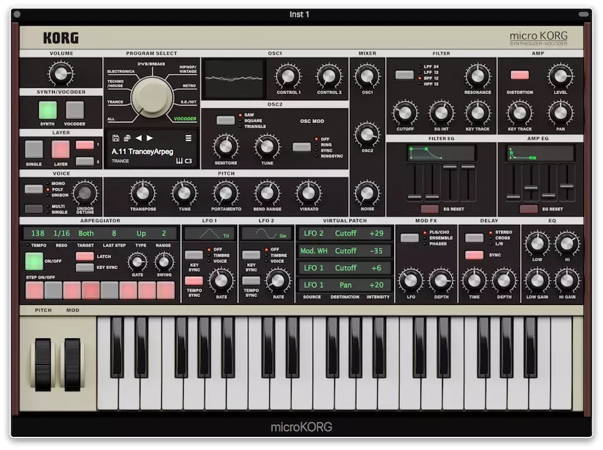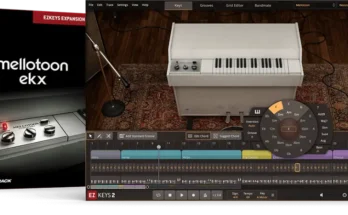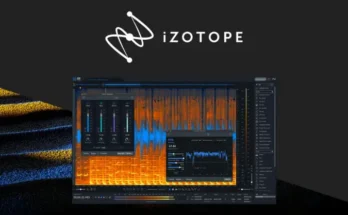microKORG v1.0.2 Mac [MORiA]
MORiA | January, 31 | STANDALONE | AU | VST3 | 512.6 MB
microKORG Synthesizer / Vocoder Since its release in 2002, the microKORG has been loved by more musicians around the world than any other hardware synth in music history. Following the first generation microKORG, a number of variations were introduced, including the microKORG XL released in 2009 and the microKORG S with 2+1 speakers, as well as many color variations. The microKORG was born out of a desire to bring the appeal and fun of synthesizers to beginner and professional musicians, track makers, and creators everywhere. Korg easily achieved this goal,creating a wildly successful synthesizer that was not only compact andeasy to use but sounded amazing.
Oscillator section with a variety of waveforms.
In the oscillator section, which is the basis of tone, two oscillators can be used per voice. Oscillator 1 has 8 built-in waveforms, including sawtooth wave, square wave, and audio input, and you can also select the DWGS waveform, which has 64 built-in waveforms. Each waveform can be processed with the two [CONTROL 1/2] knobs (DWGS is waveform selection only) for even more versatile sound creation. Oscillator 1 also has an oscilloscope that displays waveform changes in real time. Oscillator 2 contains only the basic waveforms of sawtooth, square, and triangle waves, and can also perform oscillator-to-oscillator modulation such as ring modulation, cross modulation, and hard sync.
Filter section for processing sounds, Amp section that controls the volume.
The sound from the oscillator goes through the mixer and then into the filter section. The filter section incorporates four types of filters, allowing the sound from the oscillator to be processed as desired. The low-pass filter also has a sharp 24dB mode.
– After passing through the filter, the sound enters the amplifier section. Here you can adjust the overall volume as well as panning and key tracking. A distortion switch is also provided for extreme distortion of the sound.
An envelope that controls the temporal variation of sound.
The change from the beginning to the end of a sound can greatly change its character. For example, some sounds appear and disappear quickly, while others are heard slowly and have a long reverberating sound. Envelope generators are used to create such temporal changes in sound. microKORG for Mac/Win” has one envelope for the filter and one for the amplifier. The envelope itself is an easy-to-understand ADSR 4-stage type. There is also a display on the envelope slider that shows the shape and progression of the envelope, making it even easier to understand.
LFO that creates periodic changes in sound.
There are two built-in low frequency oscillators (LFO) that can be used for vibrato, wah, tremolo, etc. LFO 1 offers sawtooth, square 1, triangle, and sample & hold (random) waveforms, while LFO 2 has sawtooth, square 2, sine, and sample & hold available for a total of four waveforms each. The KEY SYNC switch can also be used to turn waveform restart on/off during note on, LFO polyphonic operation, and so on. Of course, the LFO cycle can also be tempo-synchronized.
Virtual patching for exploring deep sound creation.
An additional fun aspect of sound creation is modulation, in which sections of the synthesizer are connected to each other to change their behavior. Like the original “microKORG”, “microKORG for Mac/Win” allows you to set up four modulation routings (modulation connections). 8 different modulation sources and destinations can be connected to each other, and the modulation depth can be set. By connecting 8 different modulation sources and destinations, you can immerse yourself in a world of even deeper sound creation.
Version 1.0.2
– The microKORG plug-in was sometimes not recognized by FL Studio. This problem has been fixed.
– Added support for program change when using VST3.
– Other stability improvements.
Please REPORT in Comment Broken Links




